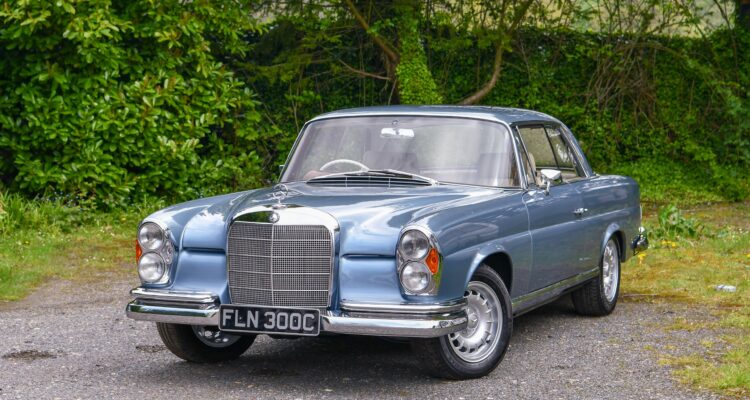Was the Elan Lotus’ Magnum Opus?
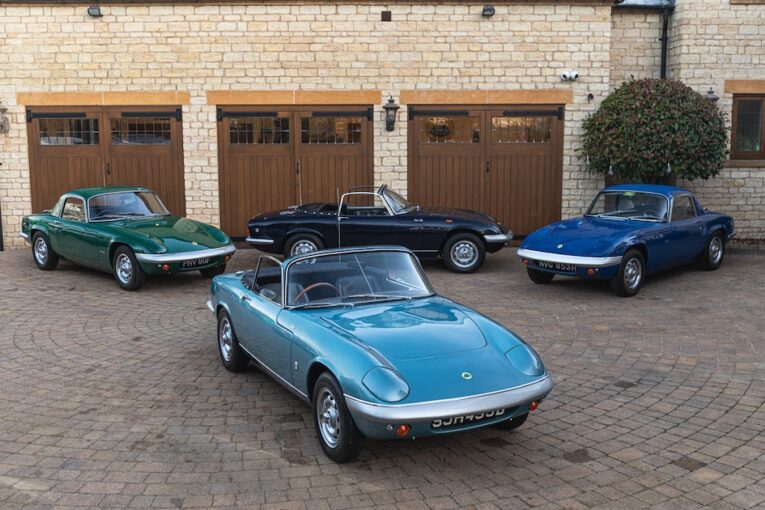
AVENGERS
The Lotus Elan is inextricably liked with the legendary ’60s TV Series The Avengers, where the Elan was crime-fighting Emma Peel’s steed. In total, two models appeared in nearly 30 episodes; initially a plain white drophead (HNK 99C) before switching to a light blue S3 (SJH499D) to coincide with the series now being filmed in colour. Everybody loved the little lithe Lotus which became a symbol of the 1960s – all except actress Diana Ring that is, who upon being given the car as a leaving gift in 1967 immediately sold it! The transatlantic publicity the Elan gained on the silver screen was reportedly worth £5m to Lotus back then – equivalent to a staggering £116,111,679 in today’s money – and certainly handsomely paid Lotus back for the £42,000 (£1.2m) the Elan was claimed to have cost Colin Chapman and co to develop.
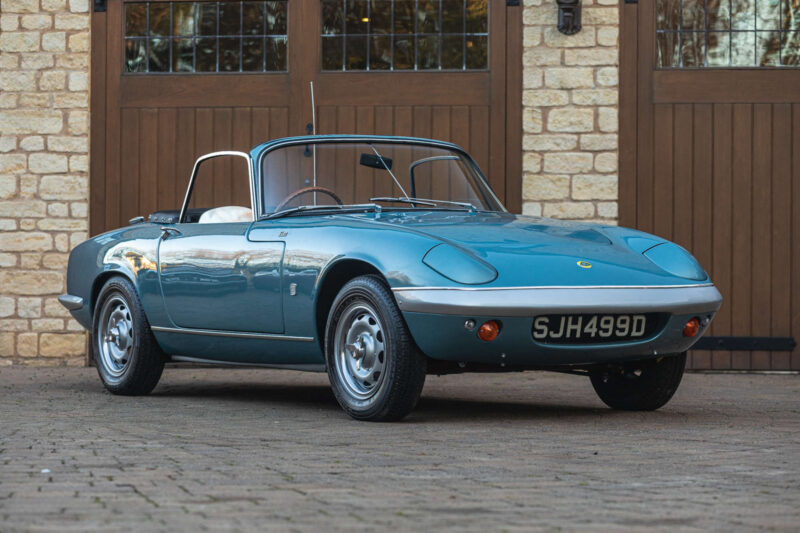
Did You Know?
Although Peel’s replacement, Tara King (AKA Linda Thorsen) drove an early Europa, she was also also seen in one episode behind the wheel of a Plus 2 (NPW999F).
BACKBONE CHASSIS
The secret of the Elan’s legendary handling was in part due to the stiff backbone chassis which was designed by Chapman along with his ‘Chapman strut’ suspension. However it was more by accident recalled chief Elan designer, the late Ron Hickman, who simply asked Colin for a basic chassis design to which an aftermarket fibreglass body (from Falcon Shells) could be fixed so the running gear could be developed from. However, its brilliance which became yardstick for sports car handling suggests it wasn’t a fluke! The basic frame was also adapted for the mid-engined Europa and Esprit by turning it around. Not a bad outlay for something claimed to have cost just £10 per unit.

DID YOU KNOW?
Heresy to some – but Peterborough specialist Spydercars’ direct fit replacement chassis is quietly reckoned to be an improvement on the original. Of a space-frame design, it is claimed to be 50 per cent stronger. To date, the company says some 3600 have been sold.
COLIN CHAPMAN
One of the most influential men in the history and evolution of the motor car, this qualified aero engineer started off by modifying Austin 7s for competition and trading second-hand cars in London’s notorious Warren Street. Apart from the equally legendary Seven (which still flourishes in production under the Caterham name), his first proper road car was the ill-fated Elite of the late 1950s, which while sensational looking and performing, was a mega money loser. The Elan took all that was good about the Elite and produced it in a simpler, more cost effective package.
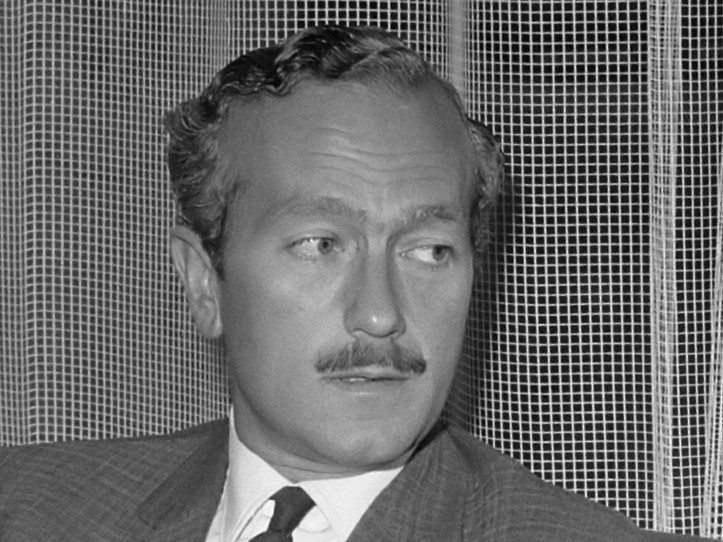
DID YOU KNOW?
While Chapman gets the bragging rights, rumour has it that he had surprisingly little interest in his road cars of which he saw only as money makers to fund his real love, Formula One. It was also a pretty rare sight to see Chapman driving one of own creations as well, preferring instead large comfortable saloons such as a Jaguar Mk2, Ford Galaxie or even a Zodiac.
DELICATE DRIVE
What set the Elan apart from its rivals was the way it drove. Before this Lotus came along, the majority of contemporary bone shaker sports cars had to be taken by the scruff of the neck and man-handled. Elan consigned this thinking to history, replacing arms and elbows with finger-tip finesse.

DID YOU KNOW?
The original Elan ran on skinny Cortina 155/13 tyres and even the fastest version, the Sprint, only wore 175/70- x13 rubber. Decades on and renowned specialists still warn against fitting wider tyres.
ELANBULANCE
This was a special, and well executed, sportshatch conversion carried out, not by the factory, but specialist dealer Hexagon of Highgate to compete with the larger Reliant Scimitar GTE, Volvo P1800ES and the MGBGT. Debuting in 1972, the quality conversion added £600 to the already high standard £1895 showroom price. While it certainly gave the Elan a dose of practicality and gained favourable press coverage, only two were made.

DID YOU KNOW?
A dreadful name, it’s said that Colin Chapman equally detested the concept – yet he launched the sportshatch Elite two years later!
FIBREGLASS
Chapman wasn’t the first to embrace fibreglass bodies as making a special. But at the ’56 London Motor Show Chapman saw the new Berkeley sports car which sported an all monocoque fibreglass construction, designed by Lawrie Bond (of Bond Bug fame) and the seeds were sown.
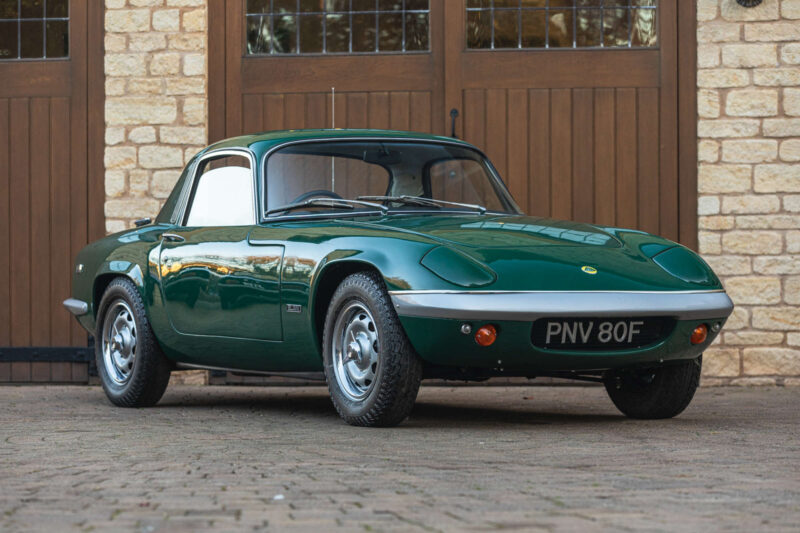
DID YOU KNOW?
There’s was strong possibility that Lotus wanted to form an alliance with Reliant just after the Elan was introduced, mainly for its expertise in producing bodies. A cheap three-wheel sports car was also a distinct possibility before, Chapman, in his typically characteristic fashion, lost interest in the deal.
GRAND PRIX DRIVERS
One of the many attractions of owning a Lotus Elan when contemporary is , apart from Ferrari, it was the only manufacturer producing road and racing cars – the difference being that the Chapman’s classics were a darn sight cheaper! All the F1 legends had Elans; Jim Clark, Graham Hill, Jochen Rindt, Emerson Fittipaldi, Ronnie Peterson… so owners felt strong bond with the team. The Elan was the only sports car ordinary motor racing fans could emulate their heroes affordably.

DID YOU KNOW?
Elans owned by GP legends are hot stuff on the auction scene. Jochen Rindt’s S4 was the least used of all GP-linked Elans, having been gifted to the Austrian by Chapman on 2nd August 1970; a French Blue, left-hand drive model. Sadly Rindt was killed at the Italian GP a month later. It sold for sold for £65,250 in 2023.
HICKMAN
A prime mover of the Elan project and father of of the Plus2, designer and stylist Ron Hickman joined Lotus from Ford after lending a hand finalising the 105E Anglia. He designed a mid-engine sports racing car which was intended to woo Ford into giving Lotus the GT40 project. Instead it evolved into the Europa.

DID YOU KNOW?
After leaving Lotus, Ron Hickman help design the seating on the QE2 but found fame and considerable fortune by inventing the movable Black & Decker Workmate. By the time he died in 2011, aged 78, it had sold over 100 million units!
IMITATOR
The World’s best selling sports car – Mazda’s MX-5 used the Lotus Elan as its benchmark during the car’s development. They say imitation is the sincerest form of flattery and while Chapman would be have been chuffed, he was never one to live in the past and probably would have favoured the front-wheel drive M100 Elan instead – even though it flopped.

DID YOU KNOW?
There was another Elan imitator called the Evante, whose production spanned from 1987-1991, produced by a subsidiary of Elan specialist Vegantune. Of space-frame construction, Evante used Vegan-tuned Ford engines, Sierra transmissions, independent suspension and discs brakes all-round.
JAP
J.A.Prestwich and Company Limited (JAP) was the outside firm entrusted with the initial manufacture and assembling the Lotus-Ford Twin Cam engines. The Tottenham company was a renowned name, but was wound up in 1964 after relocating to Wolverhampton. When Lotus moved from Cheshunt to Norfolk in 1966, engine assemblies were carried out in-house.
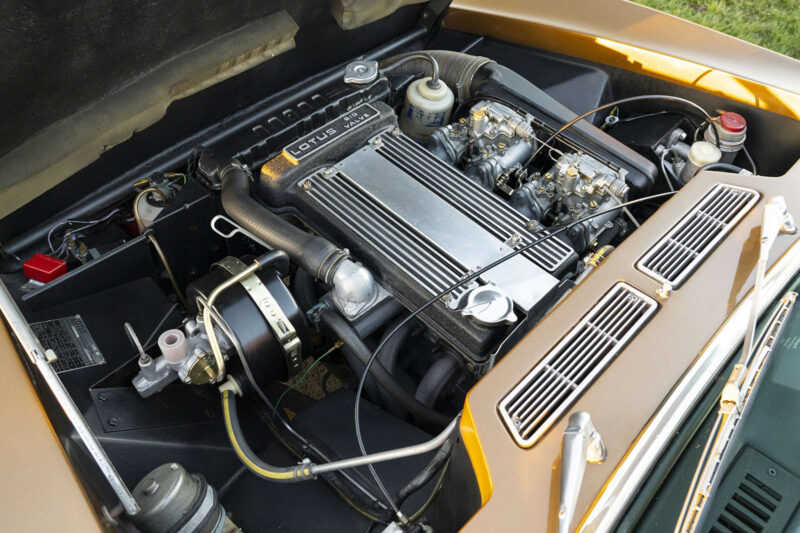
DID YOU KNOW?
Before J.A.Prestwich turned his expertise to engines he was a renowned maker of scientific instruments before applying his hand to cameras and projectors.
KENT
This was the bedrock of the Lotus-Ford engine and still going strong. Initially a 997cc three-bearing first used in the Anglia 105E, the first application as the Twin Cam, was to an Anglia fitted with the Ford Classic’s 1340cc unit in December 1961, producing 85bhp. Further work by Lotus raised it to over 90bhp but it took the stronger five-bearing 1498cc block and final finishing and fettling by Cosworth to raise its game to 108bhp.

DID YOU KNOW?
Father of the Twin Cam cylinder head, Harry Mundy – Chapman offered him two options; a flat fee of £200 (£5695 in today’s money) of £1 (£28.48p) for every head produced. He chose the former. The TC’s production figure surpassed 25,000, he cheekily told Colin that he had changed his mind. Guess what the answer was!
LIGHTNESS
Mainly due to his aviation engineering expertise, Colin Chapman was obsessed by weight saving and ‘Just add lightness’ was his personal mantra, because it meant extra performance at no added cost – ‘Something for nothing’, he would say. Chapman never used two components when only would suffice. For instance, his famous ‘floating’ front number plate had the registration marks simply attached to the grille.
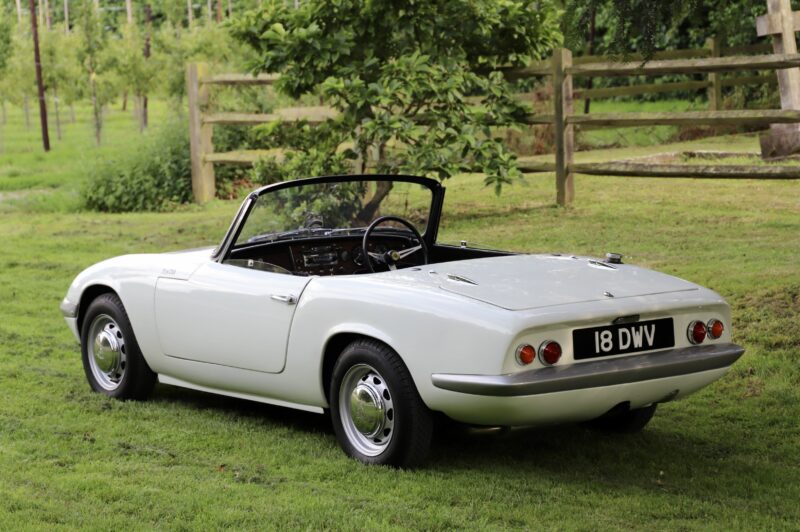
DID YOU KNOW?
The original Elan tipped the scales at just 680kg, whereas the steel-bodied Mk1 MX-5 weighed in at over 1000kg, just slightly more than the M100 Elan of the same period. Only when Lotus returned to Chapman’s philosophy with the Elise did the did the pounds drop off – but it’s still some 200kg the heavier.
M2
This was the working title of what evolved into becoming the Elan and before it gained its official Type 26 moniker. With Chapman looking a cheaper substitute for the Elan the newly employed Ron Hickman informed Colin that Ford had taken a keen interest in the new Austin-Healey ‘Frog-eye’ Sprite and also looked at producing a cheap sports car to be powered by the soon-to-be launched Anglia ‘Kent’ engine.
DID YOU KNOW?
Initial design proposals using Sprite body parts meant the M2 was no looker like the beautiful Elite so M2 (Major Project 2) was placed on the back burner for a while, only to return as a larger, more stylish and more expensive concept which became the Elan. Critically, it helped introduce Chapman to Ford – and the rest is history.
NEIL (CHRISTOPER)
The well known Lotus specialist, Christoper Neil made what Lotus inexplicably wouldn’t – a Plus2 convertible. Produced during the 1970s, the CN Cabriolet, as it was called, was a particularly neat conversion that even retained the Plus2’s silhouette when the hood was erected. It is reckoned that more than 50 cars were converted.

DID YOU KNOW?
One reason why a Plus2 cabriolet was never factory made was due to the excessive body flexing caused by chopping of the integral roof compared with the normal, smaller Elan which was designed as a soft top or closed coupé from the outset, says Spydercars of Peterborough.
OMNIPRESENT
Like all rival specialist car makers, Lotus raided the parts bin from mainstream manufacturers to produce the Elan. Apart from the Ford Kent engine block, a Corsair/Classic-derived gearbox (with special ratios) was employed in conjunction with a Ford Anglia rear axle. Chapman used the front suspension from the Triumph Spitfire (Triumph trunnions with Lotus wishbones) together with its rack and pinion steering, albeit Lotus modified for a quicker response. The optional five-speed gearbox was a hybrid being an Austin Maxi geartrain housed in special Lotus-Ford casing.
DID YOU KNOW?
Trim came from all sources; for instance the tail lights on S2 cars were Vauxhall Victor while later models and Plus 2s used Alfa Romeo items – so everybody can gain credit in lending a hand to the Elan’s success!
PLUS2
It’s said that plans for a 2+2 Elan started as early as 1963 as a more luxurious family friendly Elan. The car’s sweet styling was dictated by a windscreen which came from the Ford Classic, Anglia front bumper and a Wolseley Hornet rear item. A much bigger car than the petite two-seater and no less than 91kg heaver, the optional 118bhp Special Equipment engine was standard issue to maintain the performance. A plusher Plus 2S surfaced in October ‘68 and was the first not to be offered in kit form. It never officially bore the Elan name either, simply the called Lotus Plus 2S.
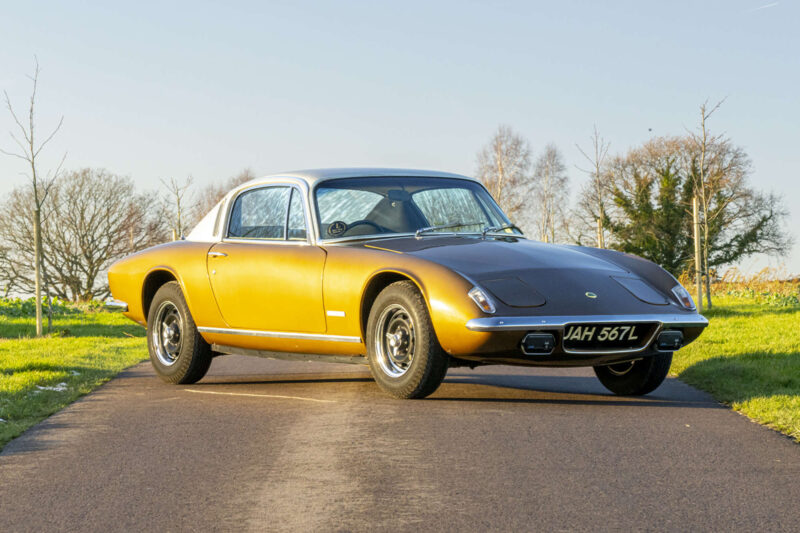
DID YOU KNOW?
Plus2 was the only Elan to to be offered as a limited edition. The Plus2 S130 50th was made to commemorate the team’s 50th Grand Prix win at the 1973 Spanish Grand Prix where World Champion Emerson Fittipaldi took the chequered flag in his black and gold pinstriped JPS 72. Oiginally, only 50 were to be produced but eventually 115 ’50’ Plus2S were made of which a rumoured 80 survive.
QUICKEST
That honour goes to the Sprint thanks Tony Rudd’s Big Valve engine. The ex-BRM engineering boss designed a new cylinder head, pistons and racier camshafts to raise the TC’s ante to 126bhp. Motor magazine rocketed a Sprint to 60mph in just 6.7 seconds while rival Autocar clocked a heavier Plus 2S 130/5 (five-speed) at 121mph dead after it sprinted to from 0-60mph in 7.7 seconds but even a standard Elan did the time-honoured heartsick in under nine.

DID YOU KNOW?
The least liked Elan was the S4, despite having some 50 improvements over the S3 to bring it in line with the Plus 2. The most questionable ‘benefit’ was the substitution of those exotic Weber DCOE carburettors in favour of twin Strombergs, chiefly for US emission regulations. Complaints from owners and dealers meant that from November 1969 Webers ruled the engine bay again, although this was as much due to Weber prices being lowered!
ROTOFLEX
The bane of every Elan owner surely? Due to having an independent rear suspension as opposed to a solid rear axle (which Chapman detested with a passion) individual driveshafts were needed and, to cut costs, Lotus chose Rotoflex couplings which would also be fitted to Hillman’s newly introduced (rear-engined) Imp. Even during the Elan’s development, project engineer Brian Luff was concerned over their durability and short service life – fine for the 39bhp Imp but not the power of the Lotus Twin Cam!

DID YOU KNOW?
It’s not simply their durability that irked Elan drivers – it was also their drivability. The least liked characteristic of the Elan remains the way it surges when drive is taken up, due to the coupling’s elasticity resulting in an unpleasant ‘Kanagrooing’. Don’t put the blame on your lack of skill though. Apparently after driving an Elan, the late Graham Hill is reported to had said in his inimitable, colourful, way to the Lotus sales director that he couldn’t believe how Chapman had made a car so difficult to drive!
SELF BUILD
Like the Lotus Seven, the Elan was designed and encouraged to be built at home and Lotus used to advertise how straightforward it was. You could assemble one over a weekend (with some helpers) to make it to the local by Sunday lunch time proclaimed the advertisements! It wasn’t purely for personal pride by owners, the main incentive was to save on the Purchase Tax all factory-built vehicles suffered from, which on average accounted for as much as a third of the total retail price. The introduction of VAT in April ’73 lead to the car’s demise.
DID YOU KNOW?
The bulk of Elans were ‘self build’ although not that many owners wished to soil their hands! Instead it was left to moonlighting Lotus staff and dealer mechanics to do the dirty work for a £100 or so – cash in hand of course! Apart from from having the job done properly it also meant that the car would pass a strict examination by Lotus before it could qualify for the manufacturer’s warranty.
TYPE 26
This was the official Lotus model designation; a numbering system which also included racing cars, such as the legendary Grand Prix 49 (1967-70), 72 (1970-75) and the 79 (1978-79) racers. The 26R was the racing version of the Elan which featured a stiffer chassis but there was also the Type 36 (hardtop) and Type 45 which covered the S3,S4 and Sprint. The Plus2 was Type 50.

DID YOU KNOW?
Chapman never envisaged the Elan for competition but such was the car’s performance and handling untapped potential that they filtered onto the tracks as early as 1963. The 26R was only available via a subsidiary company called Lotus Components. Available as a droptop or more commonly, a hardtop coupé, it featured a stiffer chassis, modified suspension, driveshafts, steering and brakes and flared wheel arches to accept larger tyres.
UNIMOULD
This was the fibreglass construction method used on the Elan after learning costly mistakes with the money losing Elite, which suffered from having too many individual moulds all requiring final bonding. Unlike the Elite, which employed half a dozen ‘sub moulds’ the simpler Elan design required only two major ones.

The Lotus Elite – predecessor to the Elan
DID YOU KNOW?
Elan elitists can point out that the first few hundred shells were made by Notts-based Bourne Mouldings before manufacturing was taken in-house by the start of 1964. You can tell whether the shell is Bourne-made by its small bulkhead-located badge and added floor strengthening.
V8
The Daimler SP250 V8 engine was just one of a number of power units Colin Chapman seriously considered fitting in the upmarket Elan Plus2. Others included the Triumph GT6 straight six and the Ford V4 and V6 Essex engines. In the end however, he stuck with his acknowledged Lotus-Ford Twin Cam figuring that it was better for the image of Lotus to employ its own developed engine.

DID YOU KNOW?
The Daimler V8 was the bait Jaguar head Sir William Lyons used to tempt Chapman into forging a Jaguar-Lotus alliance back in the early 1960s.. However, it’s been said the big turn off was Jaguar’s newly acquired Guy Motors truck company which was desperately old fashioned and demanded modernising, something Chapman wanted nothing to do with.
WALTER (HAYES)
Without Walter Hayes there would have had been no Lotus Cortina or Elan. This head of Ford’s press and publicity department and Chapman got along like a house on fire and by the early 1960s saw benefits of a mutual collaboration. Seizing that the Lotus would link add some stardust to Ford’s yet-to-announced new Cortina Hayes reportedly said: “Colin, why don’t you design a new saloon we can go racing with?”. And the rest is history.
DID YOU KNOW?
Rising to the ranks of vice-chairman of Ford of Europe, Walter Hayes CBE had forged a great friendship with Henry Ford II and together they set up the sadly short-lived Premier Automotive Group which saw the Blue Oval acquire AC Cars, Aston Martin and Jaguar, albeit for only short time.
XENACIOUS
To save you trouble of looking it up it means recognition and innovation and Colin Chapman deserved all the plaudits he gained until his death in 1982. Of all his road car creations, it’s the Elan which stands out head and shoulders above rest and the sort of car which Lotus could well do with marketing today and the demise of the Elan 50 years ago left a void that’s never been properly, successfully filled.

DID YOU KNOW?
As fantastic as the Elan remains as a driver’s delight, Chapman did surprisingly little to significantly develop the car further during its 11 year run and the same could be said of the Europa. It was typical of his forward thinking; once he had seen an idea through he showed little interest in it afterwards preferring to focus on the next challenge, in this case moving upmarket with the all new Elite.
YARDSTICK
In an instant the Elan made other sports cars redundant. Weekly Motor magazine hailed it as a benchmark that “dictated a reappraisal of some of the standards by which we must judge and assess all future cars”, while Motor Sport added: “…the Elan is the nearest thing to a single-seater racing car one is likely to be able to drive comfortably on the road.” Enough said.
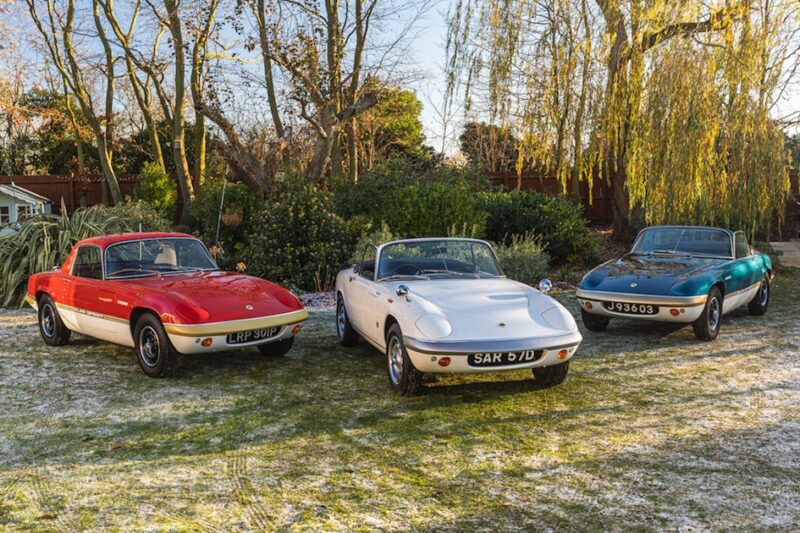
DID YOU KNOW?
Legendary Formula 1 designer Gordon Murray CBE of Brabham and McLaren fame is a card carrying Elan fan and he freely admits that his biggest remaining regret when making the McLaren F1 hypercar is that, no matter how hard his development team tried, couldn’t get the steering to match the exquisite sweetness and precision of the little Lotus.
ZETEC
If you don’t hanker for total originality, the twin cam 16-valve Ford Zetec engine is the ideal replacement as it kicks out more power and by using a dedicated kit is a straightforward fit. Spydercars has been converting hundreds of Elans for well over a decade and apart from retaining the Ford linage and a similar character, it gives the Elan almost MX-5 usability when fitted with a Sierra five-speed transmission and rear axle.

DID YOU KNOW?
Whether it was forward thinking by Ford or not, but amazingly, the original bolt spacing on the engine/transmission bellhousing has not changed since the Anglia 105E was launched back in 1959, meaning that technically it’s possible to mate a Zetec engine with a standard Ford gearbox!
If all of this has suitably whetted your whistle then head over to our Lotus Elan listings where we have a whole host of different models to suit everyone’s budgets and tastes. Go on, you know you want to.

